Showe Tray Resurfacing
- At May 28, 2020
- By thebathbusiness
- In bath resurfacing
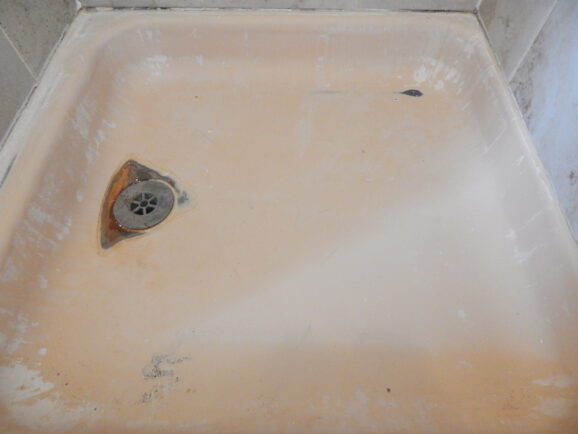
Here is the stone shower tray before we resurfaced it.
Above is a cast iron Shower Tray we were asked to sort out in the Ealing area of London. The tray is a little unusual in that it is made from enamelled Cast Iron. Most shower trays are formed from Gel-coated Stone Resin.
As you can see the enamel has taken a bit of a beating through years of use, especially around the waste, where water has sat for long periods and actually worn the enamel away right back to the cast iron, which has then started to rust.
You can see the damage around the waste area better in this picture:
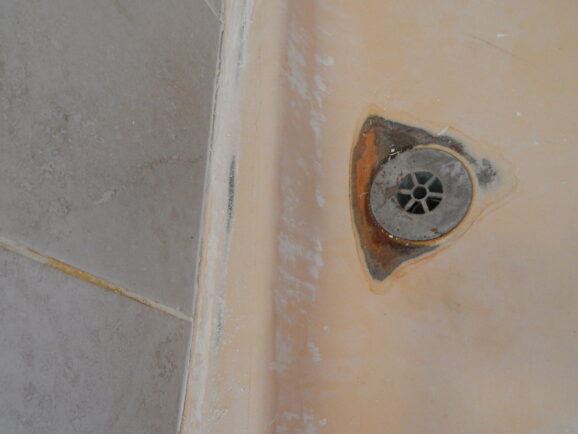
Cast Iron Shower Tray Damage around Waste
Other parts of the tray have had a bit of wear and tear but the waste area was by far the worst area of the whole shower tray.
To sort out the shower tray first of all we cleaned up the surface. Then we removed the limescale and any rust that had built up. We also made good the chips in the enamel, masked off walls, etc and then resurfaced the tray in white (the customer wanted to go with white rather then the peach colour of the original). We frequently resurface shower tray to a new colour.
Once we had finished the Shower Tray looked like this:
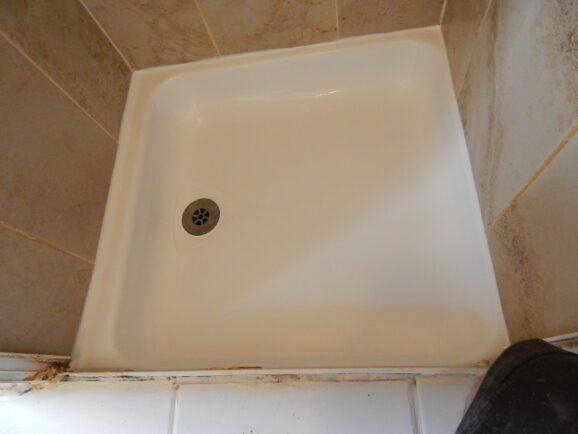
Here is the lovely end result of resurfacing a cast iron shower tray.
If you would like help getting your shower tray resurfaced give us a call on 07967 333 030 or email us at thebathbsuinessuk@hotmail.co.uk
Antique Sink with Legs Restored
- At May 21, 2020
- By thebathbusiness
- In bath resurfacing
Antique sink restoration, including legs
We are called upon to restore quite a few antique sinks. On some it’s a case of handling the staining and crazing which has built up over many, many decades of use. On others we have to repair cracks or even, on occasion, put together sinks which have been smashed.
The sink below was one in which it was just a case of handling the crazing and staining. This is quite typical of sinks this age.
This sink was in the Lewisham area of London. It had the original legs. They also required restoring along with the rest of the sink.
Here is the sink prior to restoring it:
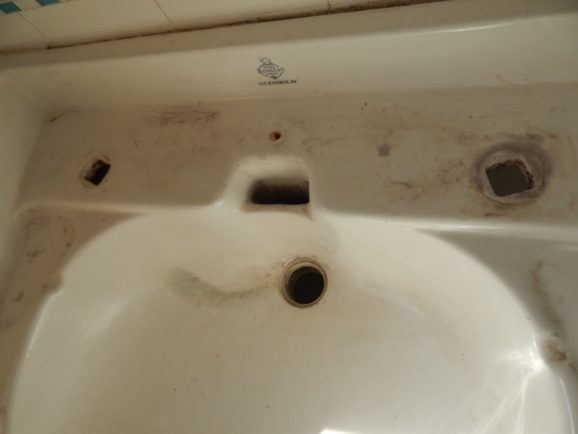
Antique basin before resurfacing
Here is a further away shot showing the legs of the sink which are original:
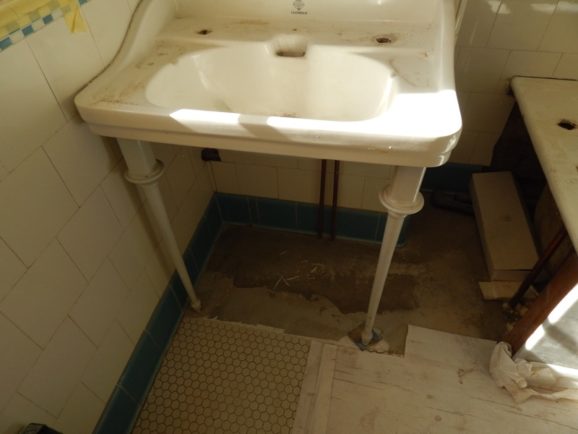
Lovely antique basin with legs
On sinks like this it is worth noting that they all tend to be a very off-white colour. They usually almost have a yellow tint to them. And quite often they have a logo stamped on them which is very much part of the character and attraction of these antiques.
We can restore them with a brilliant white finish or we can match the existing colour and restore them to that colour. And, if we have matched the existing colour of the sink, we can retain the logo too if this is desired by the client.
On the sink above, the customer was really only concerned with the crazing and discolouration and wanted a sink which looked bright and fresh. So the basic white was used in the restoration.
Here is the sink after it’s restoration:
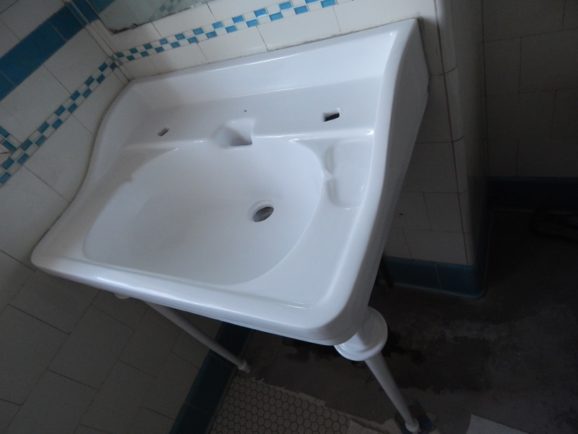
Basin after resurfacing
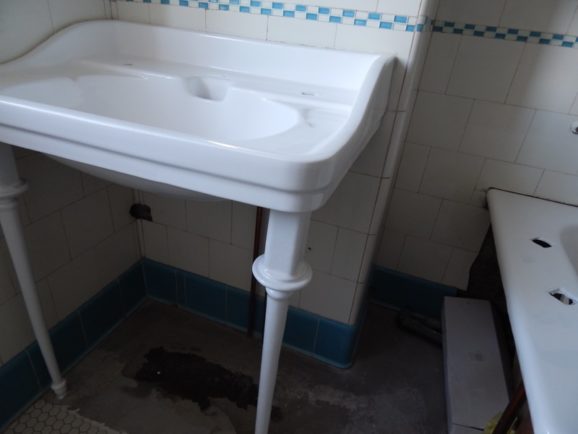
Lovely basin after resurfacing
What do you think? Would you like us to restore your sink?
Toilet Resurfacing.
- At May 3, 2020
- By thebathbusiness
- In bath resurfacing
Sometimes we restore toilets for our customers. It’s something people might not be aware can be done and so here is an example what we do with toilets
This was a job we did near Worthing on the South Coast. The toilet had built up a very solid coating on limescale in the bottom of the bowl and further staining under the rim.
Here is the limescale build-up in the bowl of the toilet:
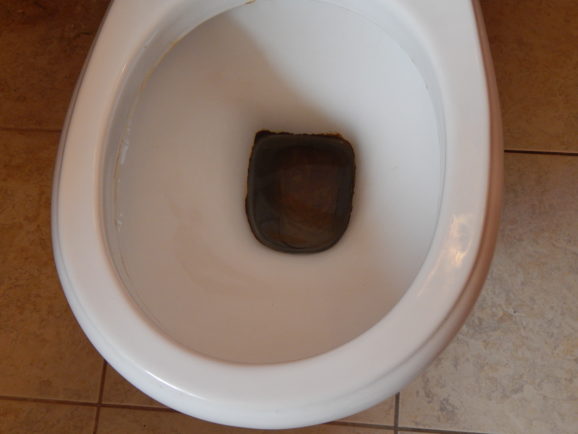
This picture shows the staining which had built up under the rim:
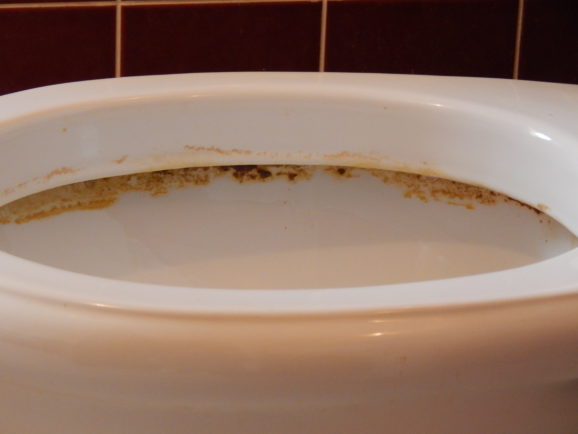
Apart from the build-up of limescale and staining, the toilet itself was in pretty good condition and the customer wanted to keep it.
First we removed the limescale and staining. Even with the limescale removed, the bowl was discoloured and slightly rough, so we removed the seat and resurfaced the toilet. Once the surface was dry, it was quality checked and the seat re-applied.
The whole job was done in a day and the toilet was back in use the next.
This comparative lack of disruption was a factor for this customer in getting us in to do the job.
His didn’t need to find and purchase another toilet and get someone in to fit and he certainly didn’t have to worry about issues with the floor tiles (the floor tiles were laid after the toilet was originally fitted and the tiles were cut to fit around this specific toilet).
Here is the finished toilet after resurfacing:
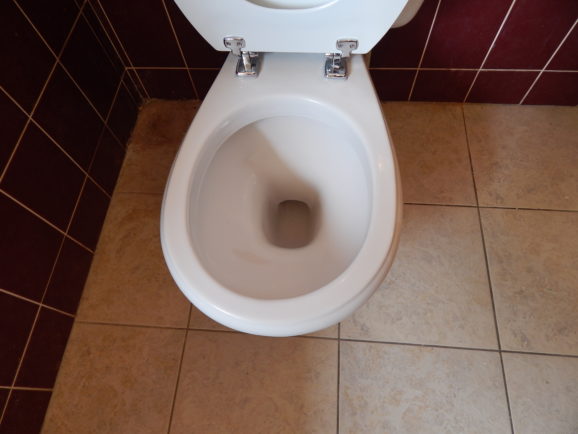
Repair to Hole in a bath.
This job was to fill in and make good a hole which had been cut in the top corner of a pressed steel bath.
The bath was in a property in the Chiswick area of London. The bathroom was having quite a lot of work done to it (tiling, etc) but they wanted to keep the existing bath.
The only issue with the bath was the hole in the corner.
The hole was originally cut so that a shower attachment could be fitted there. But with the re-fit, this was no longer needed.
Here is the hole in question:
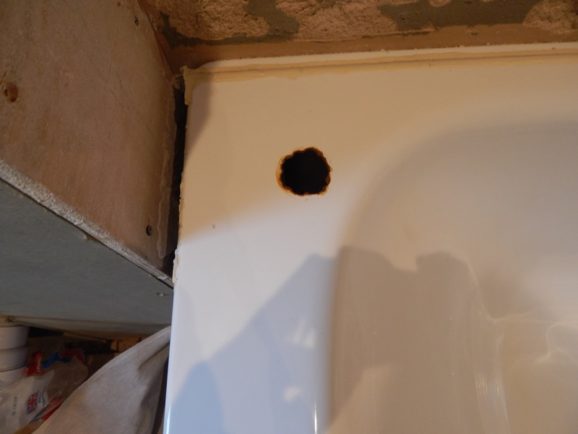
Damaged Bath before Repair
First, fibreglass was applied to the hole and then fillers were used to make the area smooth.
Once the filling was done, a colour was made up onsite to match the off-white colour of the bath.
This colour was applied the repair and allowed to dry.
Once dry it was then lightly polished.
The end result was a hole repair which looks and feel the same as the rest of the bath.
Here is the finished job:
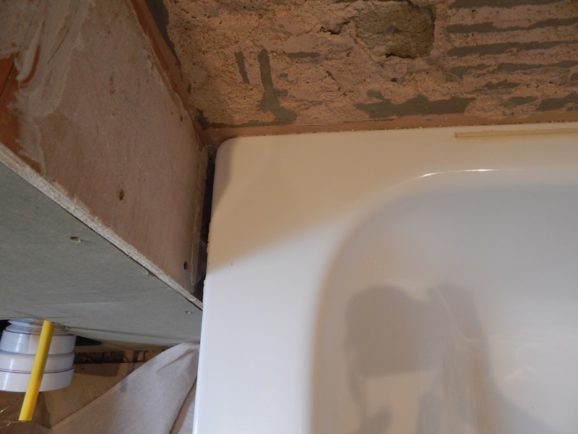
After Repair
Fireclay Sink Restoration
Large Fireclay Sink Restoration.
This was an interesting project we did for a customer in Palmers Green in London.
He had on old (and very large) sink made from fireclay in his kitchen. Usually these sink are recessed into a worktop and only the top and front of the sink are visible with the rest of the sink hidden.
However, the customer wanted his sink to be sitting on a support without any worktop around it and as a result the sides of the sink, as well as the front and top, would be on display. 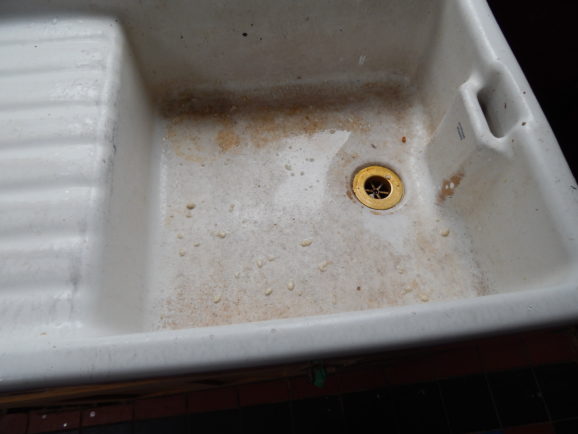
Here is the bowl of the sink in question showing the wear typical of a sink of this type and age.
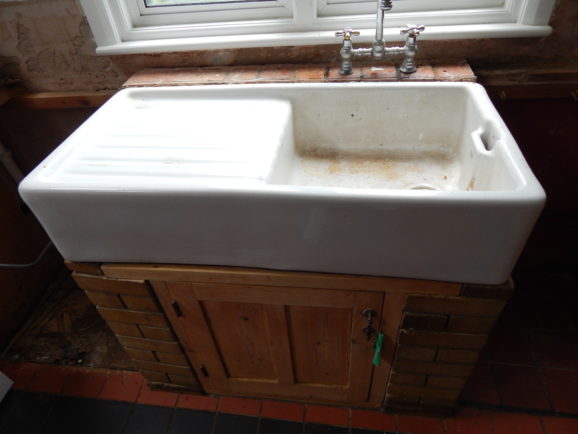
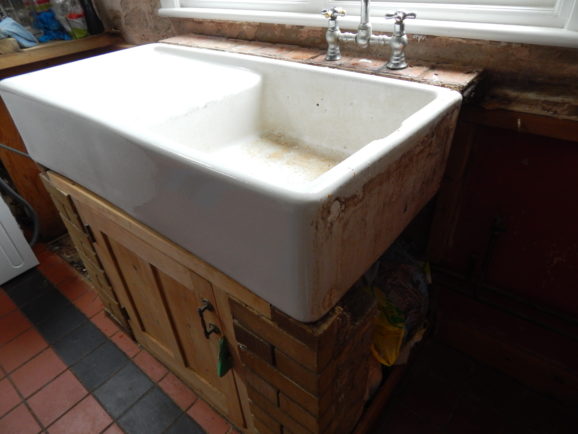
This picture shows one end of the sink and also what was unusual about this job.
When these sinks are made, one end never gets any porcelian glaze or enamel applied to it and also there are 4 circular holes just over an inch in diameter in this end of the sink, one on each corner. You can hopefully make out the two holes on the end of the sink closest to the camera.
The lack of glaze and the holes are part and parcel of the manufacturing process and generally it’s not a problem as this end of the sink is hidden from sight below the worktop.
However, it was a bit of an issue here with this sink what with it all being on display.
We filled and made good the holes on this end of the sink, as well as smoothed of the fireclay here as it was noticeably rougher than the rest of the sink which had been glazed.
Then we resurfaced the whole sink, including this end.
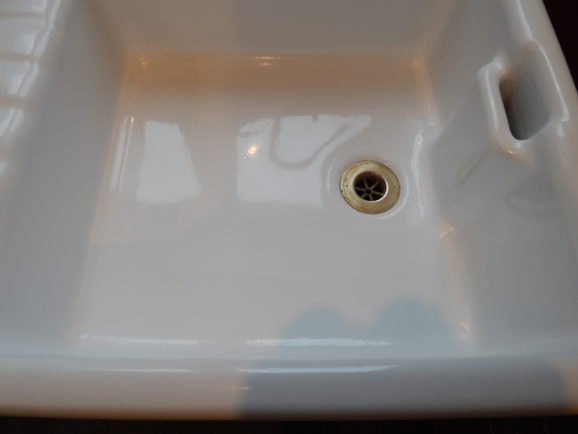
Here is the bowl of the sink. The bowl is now a uniform colour and the wear and staining has been dealt with.
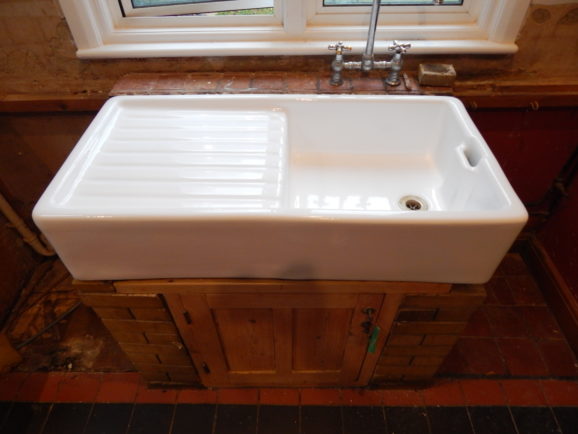
Here is the bowl of the sink. The bowl is now a uniform colour and the wear and staining has been dealt with.
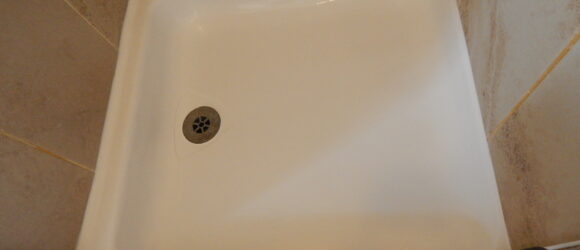
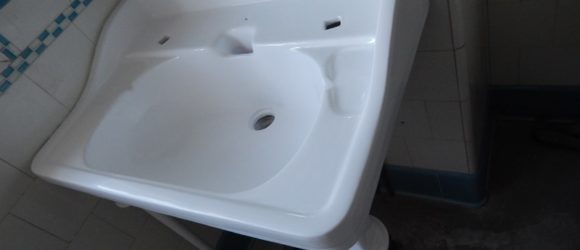
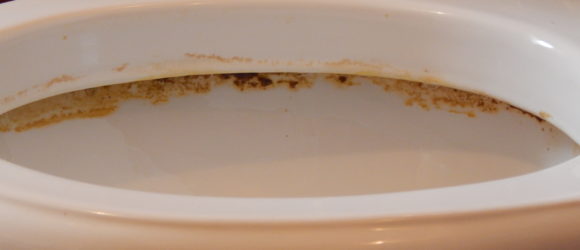
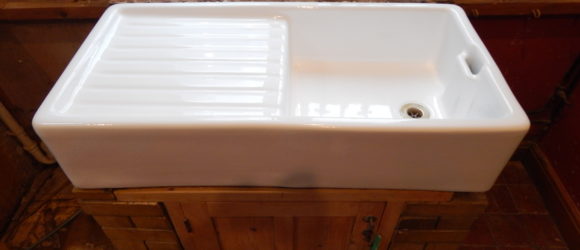


 Add us to your circle
Add us to your circle